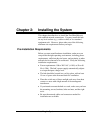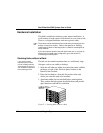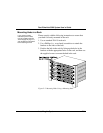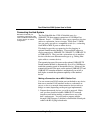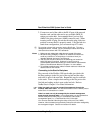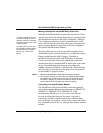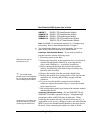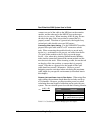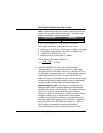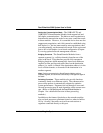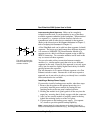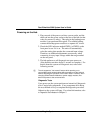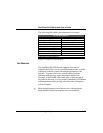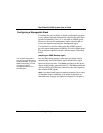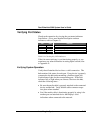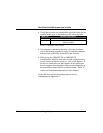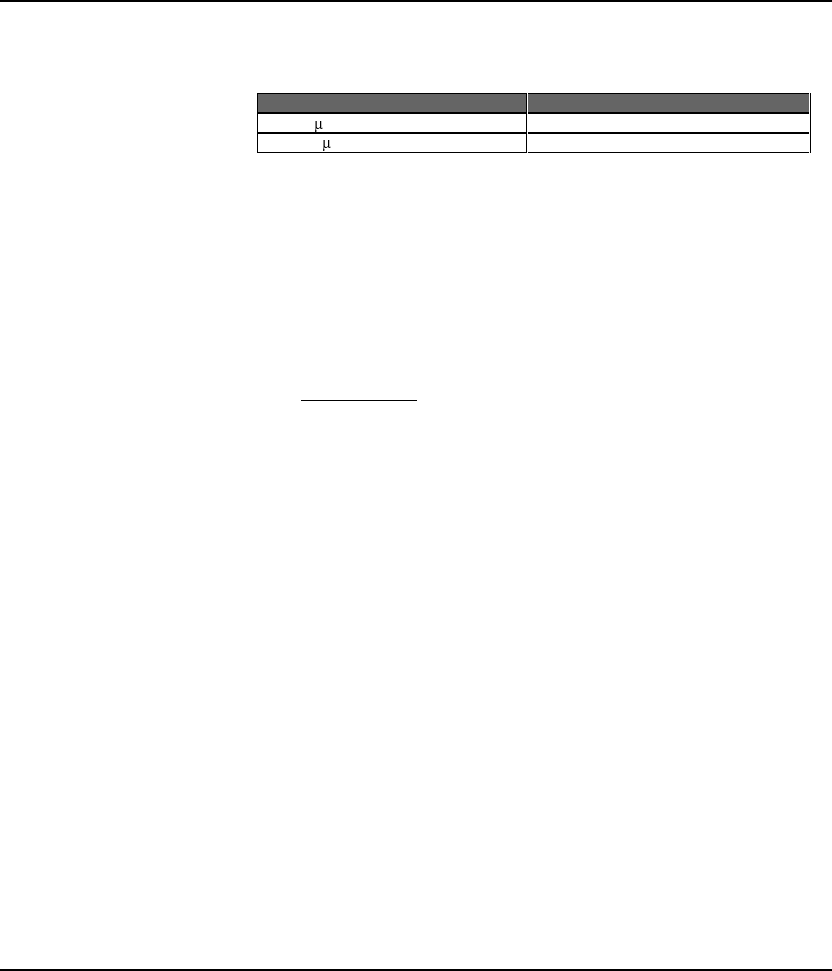
Fast EtherHub 3500 System User’s Guide
Installing the System 2-9
Note: To determine the power loss incurred by intervening devices and
specific cable type, inquire with the manufacturer. The power budget
depends on the gauge of cable as shown below.
Gauge of Fiber Cable
Power Budget
50/125 m
9.2 dB
62.5/125 m
13 dB
Table 2.2 Power Budget for Common Guage Fiber Optics
For a sample calculation, assume the following values:
• cable gauge - 62.5/125 mm, which means a 13 dB power budget,
• 2 patch panels along the path, each with 1.5 dB power loss,
• 1 splice with 1 dB power loss, and
• inherent power loss in the cable is 4 dB/km
The maximum cable length is therefore:
m =
13 dB - 4 dB
=
2.25 km
4 dB/km
I
When the 100BASE-FX link is set for the full-duplex
communications (i.e., a dedicated connection), cable length
should not exceed 2 kilometers. However, when the link is set
for half-duplex communications (i.e., a shared collision domain),
cable length should not exceed 412 meters (IEEE 802.3u).
Note: Even though your calculations for power loss may indicate a longer
permissible length based on signal strength (as seen in the preceeding
example), we advise remaining within the recommended limits.
Maximum Segment Length
- In contrast to cascading devices
through repeater ports, cascading through the SmartExtender
Module breaks up the collision domain. The number of devices
that can be cascaded is therefore theoretically unlimited.
However, in practice, the length of a cascade (even one passing
through switching ports, as implemented in the extender
modules) may be limited by the time-out requirements of the
particular applications running over the network. Considering
these delay factors, the IEEE 802.1D standard (i.e., RFC for
MAC bridges) recommends restricting the number of
interconnection devices between any two nodes to seven.



